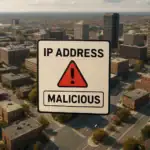Security researchers at Juniper Networks have uncovered an extensive cyber attack campaign where the notorious Mirai botnet is actively scanning the internet for vulnerable Session Smart Routers (SSR). The campaign, which specifically targets devices still using default login credentials, represents a significant threat to enterprise network security.
Attack Vector and Security Implications
The Mirai botnet employs a sophisticated scanning mechanism to identify SSR devices with factory-default credentials. Once detected, these devices become vulnerable to unauthorized access, enabling threat actors to execute remote command injection attacks and potentially orchestrate large-scale DDoS operations. This attack vector is particularly concerning as compromised routers can serve as powerful nodes in the botnet’s infrastructure.
Detection and Impact Assessment
The malicious campaign was first identified on December 11, 2023, when multiple Juniper Networks customers reported unusual activity patterns on their SSR platforms. Security analysts have confirmed that any router still utilizing default credentials should be considered potentially compromised, as these standard authentication details have been incorporated into the botnet’s attack database.
Technical Analysis and Threat Mitigation
The attack methodology demonstrates the evolving sophistication of the Mirai botnet, which has historically targeted IoT devices but has now expanded its focus to enterprise-grade networking equipment. The compromised routers become part of a larger botnet infrastructure, capable of launching devastating DDoS attacks while potentially providing attackers with access to sensitive network traffic.
Security Best Practices and Recovery Steps
To protect against this threat, security experts recommend implementing the following critical measures:
1. Immediate password rotation on all Session Smart Router deployments
2. Implementation of robust password policies including minimum length and complexity requirements
3. Regular security audits to identify potential indicators of compromise
4. Network segmentation to isolate critical infrastructure
For organizations discovering signs of compromise, security professionals emphasize that a complete system reimaging is the only reliable remediation method. This approach ensures the elimination of any persistent threats and unauthorized modifications. Following the reimaging process, administrators must implement new secure credentials and conduct thorough security validation before returning devices to production environments. This incident serves as a crucial reminder of the importance of proper security hygiene and the ongoing need for vigilant monitoring of network infrastructure.






